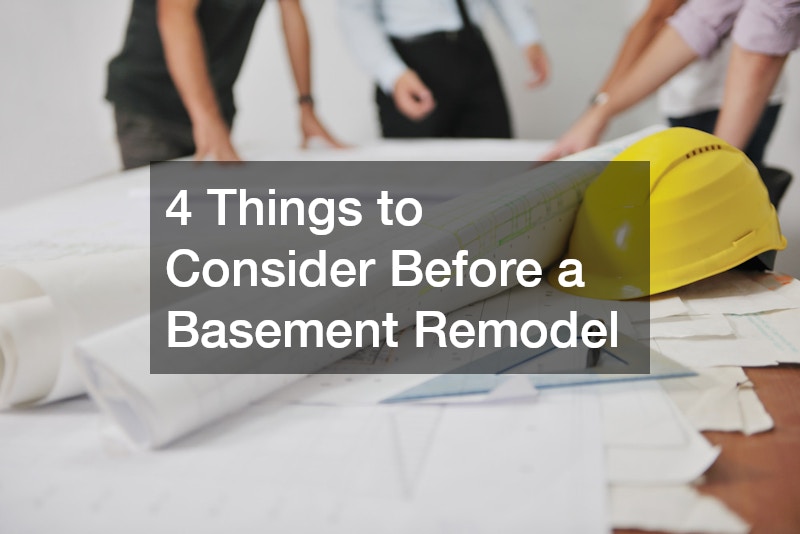Planning a basement remodel can be both exciting and daunting. Before diving into your project, it’s essential to evaluate several key factors to ensure a successful renovation. This article covers four important considerations that can help guide you through the process.
1. Assess Your Home’s Age and Structure
Before undertaking a basement remodel, it is crucial to assess the overall age and structural integrity of your home. Older homes may present unique challenges, such as outdated wiring, plumbing, and insulation materials that no longer meet modern standards. Additionally, older basements might have been constructed with lower ceiling heights or materials that are not conducive to current renovation trends.
Structural assessments should be carried out by qualified professionals who can identify any potential load-bearing walls or foundational issues. They can determine whether modifications are necessary to enhance safety and stability. Addressing these aspects early in the planning phase can prevent future complications and ensure a smooth remodel process.
Understanding your home’s construction and its limitations will help set realistic goals for your remodel. It will also allow you to adapt your design plans to fit within the existing structure, ensuring that you do not compromise the building’s integrity during your renovations.
2. Research Your Local Climate Impact
The local climate plays a significant role in defining the materials and techniques you’ll need for a basement remodel. Homes situated in areas prone to extreme temperatures or heavy rainfall need to account for seasonal variations that may affect the basement’s internal environment. This is especially crucial if you plan to use the space for living or entertainment purposes.
Local climate impacts can dictate the type of flooring, insulation, and heating solutions required to ensure a comfortable space all year round. Regions with high humidity might necessitate additional dehumidification solutions or the use of materials resistant to mold and mildew. Additionally, insulation choices may differ depending on whether you want to keep the basement warm or cool.
Consulting with local builders or contractors who have experience with similar projects in your area can provide valuable insights. They can recommend the best practices and materials suited for your basement, ensuring your remodel withstands local climate conditions without incurring excessive energy costs.
3. Plan for Moisture and Waterproofing Needs
Moisture control is one of the most critical factors to consider when remodeling a basement, as basements are inherently susceptible to dampness and water infiltration. Effective waterproofing solutions are necessary to prevent water damage, mold growth, and structural issues. Employing solutions such as sump pumps, drainage systems, and sealants can safeguard against potential water-related problems.
Before starting construction, thoroughly inspect the basement for signs of previous water damage. Staining on walls or floors, a musty odor, or visible mold could indicate underlying issues that need addressing. It is crucial to waterproof the space before adding finishes or furnishings to protect your basement remodel investment effectively.
Consider implementing a comprehensive drainage strategy that diverts water away from your home’s foundation. This might involve grading the surrounding landscape, maintaining clean gutters, and ensuring downspouts direct water far from the building. A proactive approach to moisture management will ensure the longevity and durability of your remodeled space.
4. Evaluate Space, Layout, and Future Use
When planning a basement remodel, it is essential to consider the space’s layout and how it will serve your current and future needs. Whether you envision a home theater, guest suite, playroom, or fitness area, carefully planning the layout to maximize functionality and flow is essential. Assess how the placement of walls, furniture, and utilities will best accommodate your intended use.
Versatility in design can accommodate changing family needs. As your lifestyle evolves, the basement can transform with you, meeting various requirements over time. Flexible design elements like movable dividers or multi-purpose furnishings can contribute to a dynamic space that adapts to different activities and household dynamics.
Understanding your goals for space utilization will also help in making informed decisions about electrical and plumbing installations. Future-proofing these systems for potential expansions or changes can prevent costly alterations later. This strategic foresight ensures that your basement remains a valuable and adaptable area of your home.
A successful basement remodel demands careful consideration of purpose, cost, moisture control, insulation, and lighting. By addressing these key areas, you’ll be better prepared to transform your basement into a functional and inviting space that meets your needs now and in the future.




